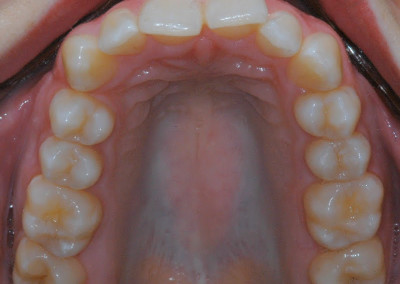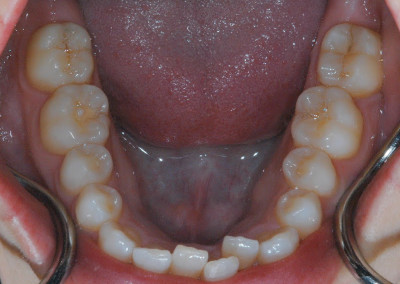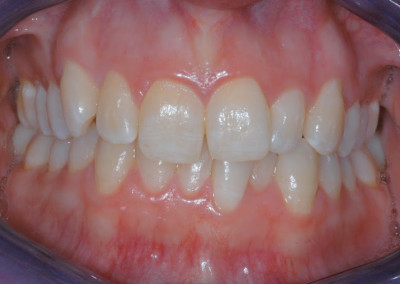Patient entered our practice for regular hygiene care. We completed our five part new patient exam (Getting acquainted, Digital Records, Clinical examination, Functional analysis, Treatment sequence).
Getting Acquainted: Her history consists of very little dental work, no orthodontics, with the 3rd molars extracted. The patient has no concerns at this time and is looking for regular care. Conversation reveals that she has occasional headaches and constant muscle tension in the shoulders and neck, but she does not think it is related to her bite. Pt only complains of seasonal allergies. Her overall goal is to maintain her current condition. Clinical Examination: TMJs are healthy with no tenderness, no crepitus, and she has optimal range of motion. The muscle examination shows a tightness and tenderness in the left trapezius. Her dentition is in excellent condition with all virgin teeth. Her periodontium is also in good condition. Her occlusion is functioning well with no slide between Centric Relation and Centric Occlusion. Her scan does reveal excessive pressure, when squeezing, on the posterior teeth. Esthetically speaking the patient is overcrowded and the high vaulted palate lead to a narrow upper arch. Because of the restricted airway during growth, the relationship between the upper and lower arch is wedged and too tight. This causes limited range of motion in her lateral slides.
Digital Records: A panoramic x-ray was taken and revealed a slight asymmetry in the TM joints, the left condyle head is slightly flatter than the right. Also, the left airway appears to be slightly restricted. The Habitual Force Pattern (HFP) on the T-scan is tight, center, repeatable and the corners (1st bicuspid and canines) are protecting the posterior teeth. The HFP (Pattern #4) is center and almost balanced. In CR the force was more predominate on the left, but there was no CR to CO slide.
FUNCTION HEALTH
Due to a restricted airway, possibly allergy related, the patient’s palate developed narrow and high. Although this patient functions well, she may benefit from a single equilibration to distribute the force and release the lateral slides. Her next step is to move on to an occlusal analysis where diagnostic casts, facebow and bite registration will be taken, followed by a limited equilibration.
FUTURE CONSIDERATIONS…
This patient will be put on a recall for hygiene. At every hygiene visit a new force scan will be taken to monitor her occlusion post equilibration. This patient may also benefit from regular physical therapy to correct any poor posture habits. Also, if the airway continues to be restricted, a oral devise or a referral to the ENT may be required.





